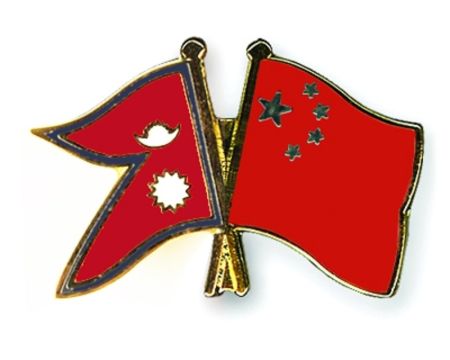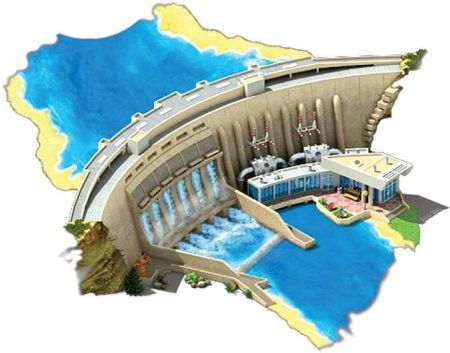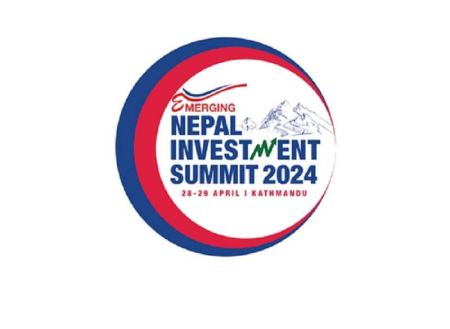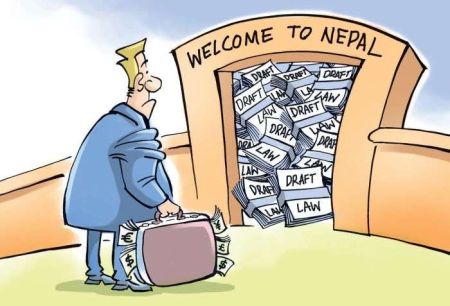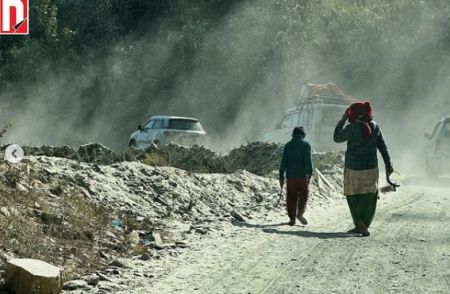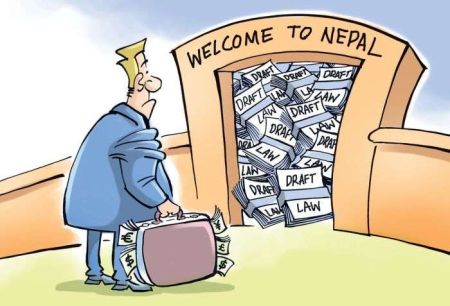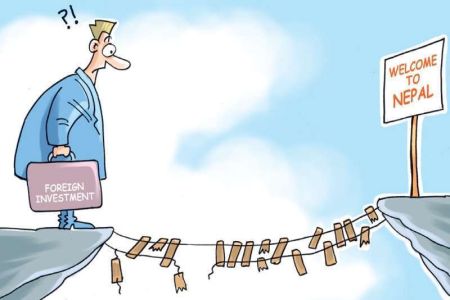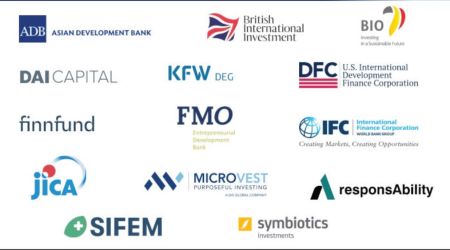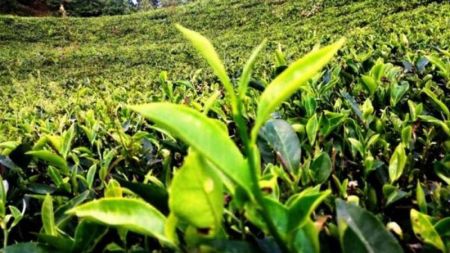
Trade of Hopes in South Asia
New Business Age Bureau
The 17th Summit of South Asian Association for Regional Cooperation (SAARC) held on 10-11 November this year adopted the Addu Declaration which lays emphasis on effective implementation of the SAFTA (South Asian Free Trade Area) accord among its member states. The heads of the eight member countries Afghanistan, Bangladesh, Bhutan, India, Maldives, Nepal, Pakistan and Sri Lanka at Addu city in Maldives discussed regional issues in an effort to take SAFTA forward. I think there is a realization now among the countries in the region to move SAARC into a more integrated regional cooperation model, says Jaideep Mazumdar, Minister and Deputy Chief of Mission at the Embassy of India in Kathmandu.
The declaration also includes measures to be taken to promote free flow of capital and investment and improve connectivity within the region. This year's Summit has decided to consider reducing non-tariff barriers (NTBs) and ad valorem (Latin for according to value) duties to promote freer trade. The SAFTA Ministerial Council has been directed to work on reducing sensitive lists, early resolution of NTBs and expediting the process of harmonising standards and customs procedures. Economic cooperation within the region is often viewed as a key tool for deeper integration within the region.]
Having recognised this, SAARC had initiated the SAARC Preferential Trading Agreement (SAPTA) as early as 1993, which later evolved into the SAFTA in 2004 and came into effect in 2006. there has been an increase in SAARC's world trade too. Hence, the share of intraregional trade has remained constant. In comparison, intra-regional trade under the Association of South East Asian Nations (ASEAN) is 32 percent, while it is 52 percent in the EU bloc and 68 percent in the USA and Canadian bloc. These trade blocs have also proved to be a tool for development for the participating countries within their respective regions.
Intra SAARC Trade
While there have been several initiatives to promote trade among the region, a host of tariff and NTBs maintained by the member countries, the exhaustive negative list and the smallish trade basket have curtailed the growth of trade and investments in South Asia for long. According to an estimate, intraregional trade among the SAARC member nations (excluding Afghanistan which ratified the SAFTA protocol only in May this year) stood at $ 14.35 billion in 2010-11, an increase of 43.4 per cent vis-a-vis the same period in the previous fiscal.
The figure is approximately 5 percent of their total overseas trade in a year which is one of the lowest intra-regional trade volumes for any particular trade bloc. Ratnakar Adhikari, General Secretary of South Asia Watch on Trade, Economics and Environment (SAWTEE) says, “Intra SAARC trade has certainly increased over the years, however,
Unfulfilled Potential
Staying true to the theme of Building Bridges, this year's SAARC Summit focused on connectivity by going ahead on a regional railways agreement and a motor vehicle pact besides inking a series of pacts on regional cooperation. Despite its high population and common culture, South Asia, is one of the most poorly connected regions in the world. While better connectivity promises to promote trade within the region, stronger trade relations can go a long way in promoting food security, poverty alleviation and improving socio-economic growth of the South Asian population. Prof Sridhar K Khatri, Executive Director of South Asia Centre for Policy Studies (SACEPS) says, The promises of SAFTA are much better but the important element is to put it into practice.
The share of South Asia in world economy is less than 2 percent with all eight nations of the region collectively contributing only 1.7 percent towards global trade. A number of regional trade issues largely remain unaddressed among the SAARC nations which are yet to tap the trade potential because of various problems. Different trade barriers like tariff, non-tariff and para-tariff, visa problems, political barriers, bilateral transit issues, negative list issues and testing issues are apparently acting as trade deterrents among the SAARC countries. Pradeep Kumar Shrestha, Vice President, SAARC Chamber of Commerce and Industry agrees, “Besides political reasons, infrastructure connectivity, high cost of business and bureaucratic hassles plague the prospects of intra-regional trade in South Asia.â€
According to a paper published by the Reserve Bank of India (RBI) assessing intraregional trade in ten regional blocs, intraregional trade in SAARC was the lowest at 4.8 percent in 2008. The RBI report quoted, The reasons for the low level of trade include protectionist trade regimes, which discriminated against trade among larger neighbours; continued conflict between India and Pakistan; and transport and trade facilitation constraints.†Thick ice of contentious competition between regional peers has always been an overriding problem in the SAARC region.
The Bottlenecks
A lack of trust and political goodwill, and underperformance in leadership by the dominant economies has been mainly responsible for not turning SAARC into a successful regional trade bloc. For example, there is a lack of trust on several issues among nations such as India, Pakistan and Bangladesh. Mazumdar raises a case in point, “Historically, there has been a problem between India and Pakistan that was a hindrance for intra SAARC trade.
As a result, the major players have not participated actively in making SAARC an effective trade bloc. For too long, member nations of the SAARC have deprived themselves of the benefits of regional economic integration. The region homes one fourth of the world's population and possesses unlimited potential but has stayed least integrated.
The region is home to two-fifths of the world's poor and accounts for only 3 per cent of global output. Intra-regional trade has stagnated at around 5 per cent of its total trade for some time now compared to around 20 per cent in Latin America. Even Sub-Saharan Africa, with poor transport and telecommunication infrastructure, scores over South Asia, with over 10 per cent of its trade being intra-regional. The SAARC members have retained a plethora of tariff and NTBs, which greatly inhibits trade and investments in the region. With a large list of negative items, the trade basket remains very narrow, with little value addition. Thosapala HÃwag, Sri Lanka's Ambassador to Nepal recommends, We should be able to come up with some kind of consensus within the region so that tariff and non-tariff barriers are removed.
The major cross-border structural rigidities include behind-the-border barriers in customs procedures, poor transport links, weak networking of private sectors, and administrative issues such as visas. Foreign direct investment (FDI) too is minimal, due to regulatory issues and a non-facilitative business environment. We do generate and agree on good ideas in this region time and again but fail to give them shape because of our many conflicts as there is a serious lack of trust among SAARC countries,says Chandra Kumar Ghimire, Joint Secretary at the Ministry of Commerce and Supplies (now Consulate General of Nepal to Kolkata).
To make the SAARC regional trade bloc effective, the progress in duty-concession by the nations is not adequate. The participating countries were supposed to reduce the number of products from the negative list year-on-year for nations to enjoy a zero-duty facility under the SAARC umbrella after a certain period. But the progress in this regard has not been on expected grounds. Business leaders representing different trade bodies among the SAARC nations have been urging their governments to further liberalise their respective economies to help augment intraregional trade, consequently effecting the region's development. There is a serious leadership deficit in South Asia where no country or leader has become an advocate of regional integration to help us overcome difficulties and ensure development, Prof Khatri observes.
India, by virtue of being the largest economy in the region and its geographic position, is viewed as the member that bears additional responsibility towards intraregional economic integration. While India's trade with South Asian countries has increased considerably over the years, it is still below the potential trade levels. India, a connecting land mass, has a special responsibility in increasing intra-regional economic integration and facilitating access to its large markets for SAARC members. The idea that we had envisioned for SAFTA around a couple of decades ago has not materialised and that’s why we see a country like India establishing relations with other RTAs, for example, ASEAN,†Ghimire laments.
Its above-average growth, expanding middle-class population, and demand for global goods can prove to be an engine of growth for the region. India's trade with South Asian countries has increased encouragingly, in the last half-a-decade or so, but much trade is below the official radar. Further, India's trade with countries such as Nepal, Bangladesh, Sri Lanka and Afghanistan remains heavily skewed in its own favour. The services trade further adds to the trade imbalance, leading to concerns among other South Asian countries about trade sustainability.
The Way Forward
The SAARC region has an immense potential for using economic integration to reduce poverty and move towards prosperity. Three areas offer large potential for economic cooperation the services trade, energy cooperation and logistical connectivity. The development of logistical hubs that facilitate the flow of trade across the region can greatly reduce the costs of doing business. These logistical hubs can help connect critical regional corridors, especially with countries having no common borders. The countries in the region will have to look into their infrastructure and ways of connectivity in order to increase regional trade, says HÃwag.
Tourism, a major growth opportunity for countries like Afghanistan and Nepal, remains constrained by security problems. Allowing intra-regional trade in services can enable South-Asian economies to become more globally competitive. Energy and electricity cooperation are non-traditional areas of trade relationship development. For example, Bhutan has managed to balance its trade with India with large exports of hydroelectric power, and similar potential exists for Bangladesh and Nepal.
An integration of electricity grids across South Asia can reduce power costs and enhance manufacturing competitiveness for all members. Huge hydro-electric potential exists in Nepal, Bhutan, Afghanistan and India, which could be tapped for intra-regional power trade. Each country has its own strength so we have to be able to nurture and benefit from areas of comparative advantages,feels Shrestha. Just days ahead of the SAARC Summit in Maldives, Pakistanâ's initiative to grant Most Favoured Nation (MFN) status to India was considered a major breakthrough. As far as trade goes, the move promises to help the economies of both the countries over a longer period of time.
Experts and analysts observe the major initiative can also prove to be an important step to help stabilise the region, struggling to combat poverty and achieve economic reliability in the wake of US and Eurozone debt crises. It would also pave the way for economic integration of SAARC countries and the prospects of the region thriving seem brighter than ever before. At the Maldives Summit, Indian Prime Minister Dr Manmohan Singh announced Indiaâ's decision to slash the sensitive list for least developed countries within SAFTA, reducing it from 480 tariff lines to just 25.
India has stated that zero basic customs duty access would be given for all the items removed, with immediate effect. There should be an attempt to create an incentive for the partner countries in the region to be able to export to a country like India,†Adhikari recommends. As things stand, SAARC as a regional bloc leaves a lot to be desired. However, SAARC has a good trade potential as the economies of a number of SAARC nations are growing fast, observers opine. The countries seem to be on the path towards eliminating tariff barriers and reducing NTBs against each other. It's time for the South Asian countries to think collectively in order to cash in the opportunity of emerging as a regional force to reckon with.






